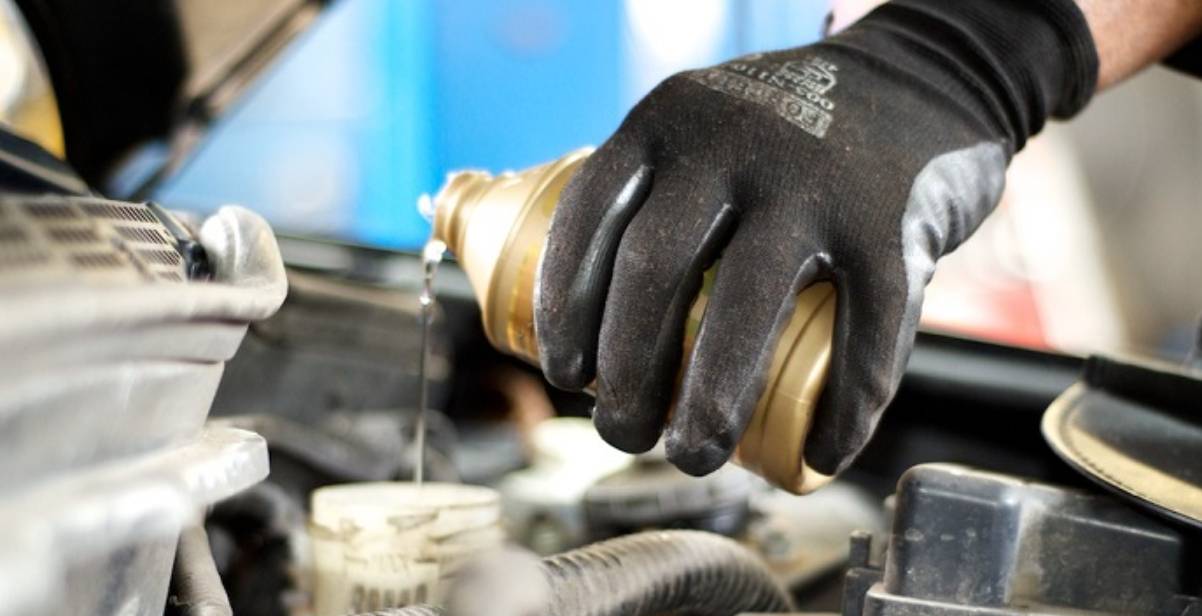The quality of the brake fluid largely determines the reliability of the braking system. And this means the safety of the driver and passengers. That is why you should choose the composition responsibly. You should not take the first one you see from a street seller. You should know exactly what fluid you need.
Basic characteristics
Boiling point
This is one of the most important parameters of brake fluid. Frequent or emergency braking causes the system to heat up, and the excess heat is transferred to the filled compound. When the fluid boils, air bubbles form in the fluid and form a plug. What’s the big deal? You brake, the pedal is smoothly pressed to the floor, but there is no or minimal reaction from the braking system. The consequences can be most dire. Therefore, the higher the boiling point of the fluid, the better. This avoids the accumulation of air in the system.
Freezing temperature
The parameter is relevant for cold seasons. It indicates the boundary value at which the composition will lose its fluidity and turn into ice. A reduction or cessation of fluid circulation will cause the brake pedal to become stiff, requiring considerable effort to depress, or making it virtually impossible. Also the consequence of an aggregate change can be a rupture of a brake system nozzle or connections. The choice of setting should be made taking into account the climatic conditions of the region.
Viscosity
If the brake fluid is thick, there will be additional problems with it in cold weather: the pedal is hard to press. Fluid low viscosity compositions are more likely to leak, and you need to refill. Given these characteristics, it is important to find a middle ground. Residents of southern regions, where there is no significant frost, experts recommend opting for more viscous compositions. In northern regions, liquids with low or medium values are used more often.
Hydroscopicity .
Characterizes the ability of the composition to absorb water. With the accumulation of the latter there is a decrease in the boiling point, and the tendency to freeze increases. That is why one should prefer the composition with a minimum indicator of hygroscopicity. A distinction is made between values for “dry” (freshly poured) and “wetted” (used for some time) liquid.
Aggressiveness
This parameter directly affects the integrity of the rubber goods, with which the fluid is in contact, as well as the absence of corrosive damage to the metal elements. To regulate the aggressiveness of the composition, special additives are introduced into it. This allows prolonging the service life of the machine.
Types of brake fluids
The classification of brake fluids is based on the DOT (Department Of Transportation) standard. The value after the abbreviation indicates its tolerance class. There are different compositions:
- DOT 3. Produced on glycol basis, they are designed for use in non-loaded brake systems of machines. Suitable for cars with drum or front disc actuators. The formulations are quite aggressive to paintwork. Operating life does not exceed 2 years;
- DOT 4. It differs from the previous class with improved characteristics. It is achieved by introduction of anticorrosive and lubricating additives. This brake fluid is suitable for cars with high dynamic qualities. Some formulations may have an adverse effect on the paint;
- DOT 4.5, 4+, 4 SUPER and 4 CLASS 6. The modifications of the fourth class, the main difference of which is higher boiling point. The CLASS 6 should be marked separately. These compositions are developed taking into account the new generation of electronically controlled systems (ABS);
- DOT 5. The fluids are made on the basis of silicones (silicone-organic polymeric substances). They are very good in hard conditions: heavy braking and frequent acceleration. At that their service life is up to 5 years. The compositions are characterized by insignificant hygroscopicity, inertness to rubber elements and paint. However, they shall not be mixed with products of other classes;
- DOT 5.1. Fluids for sports road vehicles. In their development, increased thermal loads on the brakes were taken into account. They are an improved version of the DOT 4.5 class.
Boiling points of liquids according to FMVSS No. 116
| Class, DOT | Boiling point of the liquid | |
| “dry” | “dampened.” | |
| 3 | >205° | 140° |
| 4 | 230° | 155° |
| 5,1 | 260° | 180° |
| 5 | 230° | 180° |
The subtleties of selection
As already noted, you should not buy brake fluid from unverified sellers. It is better to go to a specialized retailer or the manufacturer’s website. When choosing, you should proceed from the recommendations of the car manufacturer. You can also trust an experienced specialist. When buying:
- Choose a composition that has already been used before. It is not recommended to mix fluids from different manufacturers;
- Study the label carefully, it must contain all the important parameters;
- Do not choose compositions in glass containers.

